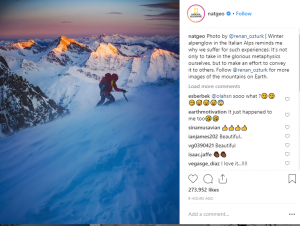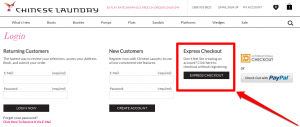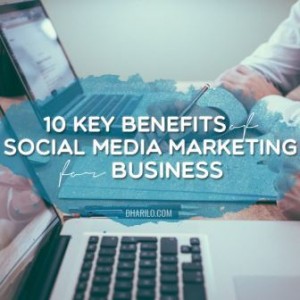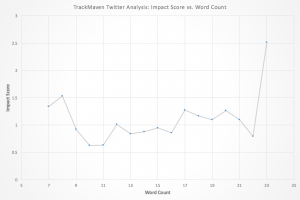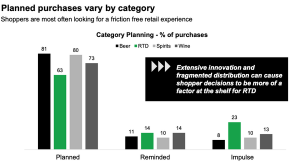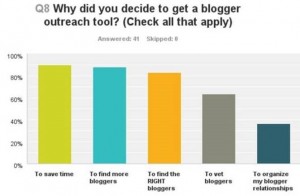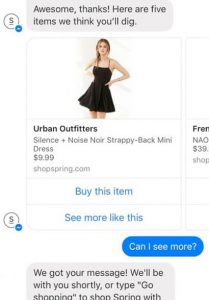
In exchange for the convenience of shopping from desktops, tablets or mobile devices, online shopping experiences can sometimes be somewhat cold and monotonous for shoppers. The typical experience for potential customers is that they click through to product pages from either category pages or search results. They then review product imagery, product description copy and in most cases carry out some form of validation by going through product reviews from other fellow shoppers (humans). If the product and price are right and their experience up to this point has been tolerable, they add the product(s) to cart and click through to checkout with the view to finalizing their purchase.
In most cases, when these customers return to the online store for a second or third time to make an additional purchase, their experience remains the same.
Ecommerce Personalization v. Offline Interactions
I recall a family holiday in France, we lodged at a self-catering cottage in a village near Bordeaux. We visited the local village artisan bakery on our very first morning in the pristine village. Other than the slight grin of acknowledgment we received from the shopkeeper, it was pretty much a straight transaction. We selected our baguette loaves and money exchanged hands. Our second visit was different: we were asked where we resided and if we were from the UK, as our dodgy broken French easily gave us up. Our third and fourth visits were even better as we conversed about the weather and places to go sightseeing. As we got to know each other some more over each visit, we got a more personalized experience. It was a somewhat social and at the same time a commercial experience.
In the context of ecommerce, the concept of personalization aims to replicate and even improve upon offline personalized shopping experiences. This guide will take you through 3 phases of ecommerce personalization.

I’d advice online retailers to use the CRAWL – WALK – RUN approach here. This will be a series of three articles. For starters I am going to begin with personalization of traffic segments, then proceed to identifying each customer with personal data and finally selecting your highest value and most influential customers.
Customized content and pricing by traffic segments (CRAWL)
“I often wonder why the whole world is so prone to generalize. Generalizations are seldom if ever true and are usually utterly inaccurate.” – Agatha Christie
As an etailer, endeavor to avoid making generalizations on the intent of site visitors and traffic, as all traffic is in fact not equal. Some sources and segments of traffic are much more valuable than others. It is pertinent to understand traffic segments and serve each segment with its deserved attention. In the real world for instance, when you frequent a coffee shop, you typically get preferential treatment from the baristas who probably beat you to saying out loud your ‘usual’ order.
Traffic or visitor segmentation is the first step in personalization because the closer you can get to at least the broad expectations of visitors, the more engaging an experience you can drive. The ability to serve tailored content to an otherwise anonymous segment of users (web traffic) is the first step in personalization.
So how do you go about segmenting traffic?

Here are six broad traffic segments:
- New visitors, returning visitors (non-customers) and returning visitors (customers): You want to make a clear distinction between new and returning visitors as well as go further by identifying returning visitors as either existing customers or non-purchasers.
- Traffic sources: Clearly segment visitors via the channels that they arrived from, i.e. email marketing, special offers, Pay Per Click (PPC), social, organic search and referral URL.
- Geo Location / IP address: Probably the most commonly used type of segmentation –– segment visitors by language, country, region, city and local weather condition.
- Behavior: There are a range of options here; segment visitors by returning and new visitors, drilling into returning visitors, you can further segment by days since first or previous visit.
- UTM parameters: You should also be able to use UTM parameters to segment by utm_source, utm_medium, utm_term, utm_content and utm_campaign.
- Device: Mobile, tablet or desktop. Other device specific parameters for segmentation include: operating system, browser name, screen width & height.
Dynamically customizing content to traffic segments
After you have established the most important segments, you want to deliver personalized experiences to by serving each traffic segment with dynamic content. So, from our traffic segmentation examples above, here are ways to serve each segment dynamic content.
1.For returning visitors (both non-customers and customers)
Display their previous browsing history in a section designated to ‘recently viewed items.’ Here are examples from FarFetch and MobileFun:

Image: FarFetch

Image: Mobile Fun
For first time visitors and returning customers, you could serve them a modal with a coupon on their first order just as Electric Family have done here:

Image source: https://blog.gleam.io/exit-intent/
2. Traffic sources
Traffic sources can tell you a lot about a buyer, including intent, interests and industry, as well as how close they are to purchase. By serving different content to visitors coming from different sources, you can increase the relevance of your messaging and motivate buyers through their buyer’s journey. Traffic from Amazon ads might have more intent than traffic from Facebook, so customising landing pages by adding 1-time coupon codes or free next day shipping might tip the balance for conversions.

Image source: https://blog.gleam.io/exit-intent/
3. Geo Location / IP address
Geo location targeting is founded on the IP address of visitors. The example below from FindTape.com recognised my UK IP address and made a currency switch recommendation to GBP (£).

Another way of Geo Location personalization based on IP address is by retrieving the current weather at the shoppers IP to make product recommendations like Burton has done in this example:
4. Behavior
Naked Wines welcome new visitors with an entirely different home page and navigation menu. This level of personalization of new first time visitors is geared and optimized to onboarding them as customers and members of their wine club.

Signed in visitors are also made to feel at home with personalized messages addressing them by first name on the home page.

On SportsShoes.com, returning visitors (customers) are addressed by their first name around the shopping cart area.

5. UTM parameters
UTM parameters help define and segment traffic by referral sources, campaign name and content type. Landing pages can be personalized by any or a combination of these three parameters. All CRO platforms support running A/B split and multivariate tests with UTM tags. This is a screenshot from Optimizely:

6. Device
With the rapid rise and ubiquitous use of mobile devices, device based personalization is a new fast growing ecommerce trend. Personalized content can be served based on device type and/or location. Mobile or tablet responsiveness or adaptive screens are now a given. The next frontier really is content tailored to mobile devices in a bid to drive conversions. Here are few ways to serve custom ecommerce content to browsers on mobile devices:
- Merchandising of product catalog pages: Considering the fact that average order value (AOV) is typically lower on mobile devices as compared to desktops, you might want to consider listing lower priced products more prominently on category pages when mobile shoppers are browsing.
- Unify desktop browsing history: If returning shoppers log into their accounts via a mobile device, ensuring that their previous desktop browsing history is factored into the mobile browsing experience will unify their personalized browsing experience.
- Offer social logins: This will help to reduce friction at the point of account registration for first time mobile shoppers.
CRO Tools offer basic level segmentation for customized content
The following CRO tools are able to segment traffic as well as serve dynamic content to each segment. And because they are CRO tools, you are able to A/B split or multivariate test your choice of vocabulary or Call-to-action (CTAs):
- Marketizator
- Visual Web Optimizer
- Optimizely
- Commerce Sciences
- Nosto
- Qubit
- TrackIf
- Bunting
- BrainSINS
Dynamic pricing
Dynamically re-pricing products based on traffic segments and other factors such as time of the day and competitors’ prices is still a relatively new means and untapped area of ecommerce personalization. Only a handful of solutions currently offer dynamic pricing.
At the enterprise level, Amazon and Staples have in the past charged shoppers different prices due to real time estimations of their incomes and geographic location. Amazon actually changes prices every 10 minutes. Other retailers such as Home Depot, Sears, JC Penneys, Macy’s, Cheaptickets, Orbitz, Priceline, Expedia and Travelocity charge higher prices to online shoppers on Mac computers or Android devices.

Online shoppers accessing Home Depot are ‘price steered,’ meaning that they are deliberately shown fewer search results of products in the more expensive price range when browsing category pages or viewing search results from mobile devices rather than a more extensive result listing if they browsed the same category or search results from their desktop PCs.
My findings show WiseDynamic by Wiser to be the only major solutions provider in the dynamic pricing space. They cater for both enterprise and mid-tier e-tailers.
Now that you have a full grasp of the fundamentals of personalization based on traffic segments, the next phase of personalization –– which will be covered in part 2 of this article –– aims to go more granular by recognizing each shopper in varying degrees of detail and offering each shopper a personalized 1:1 experience.
Digital & Social Articles on Business 2 Community(45)



